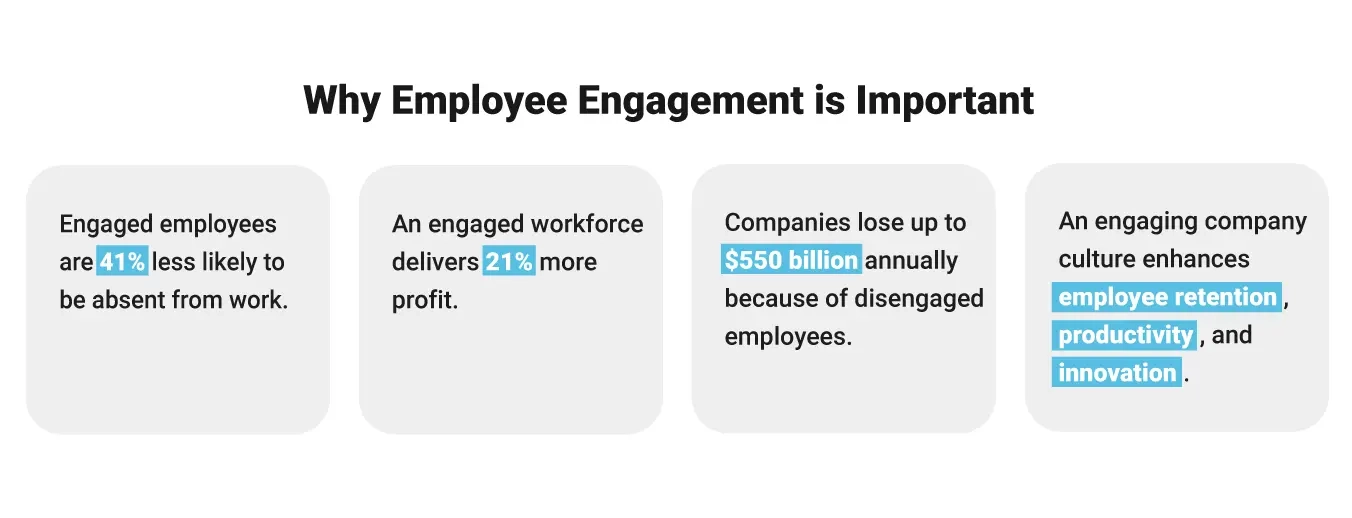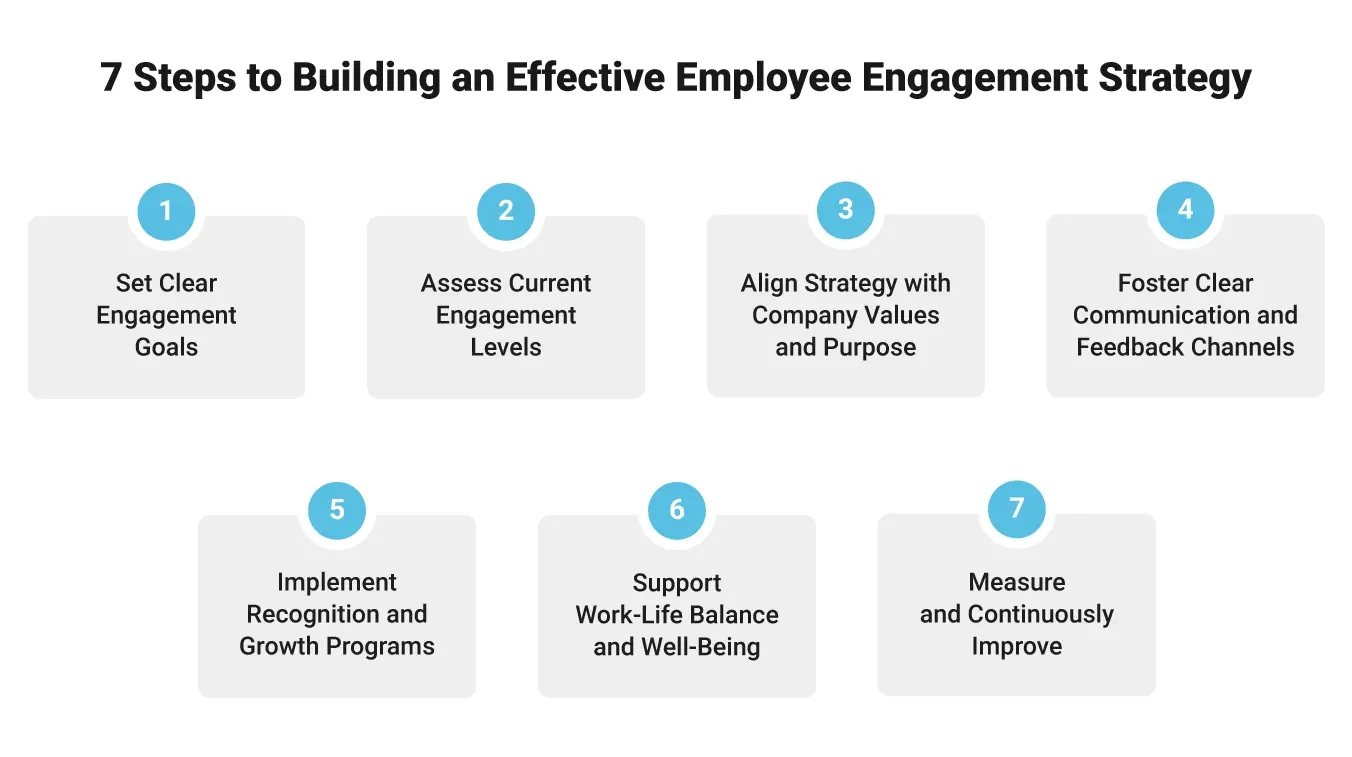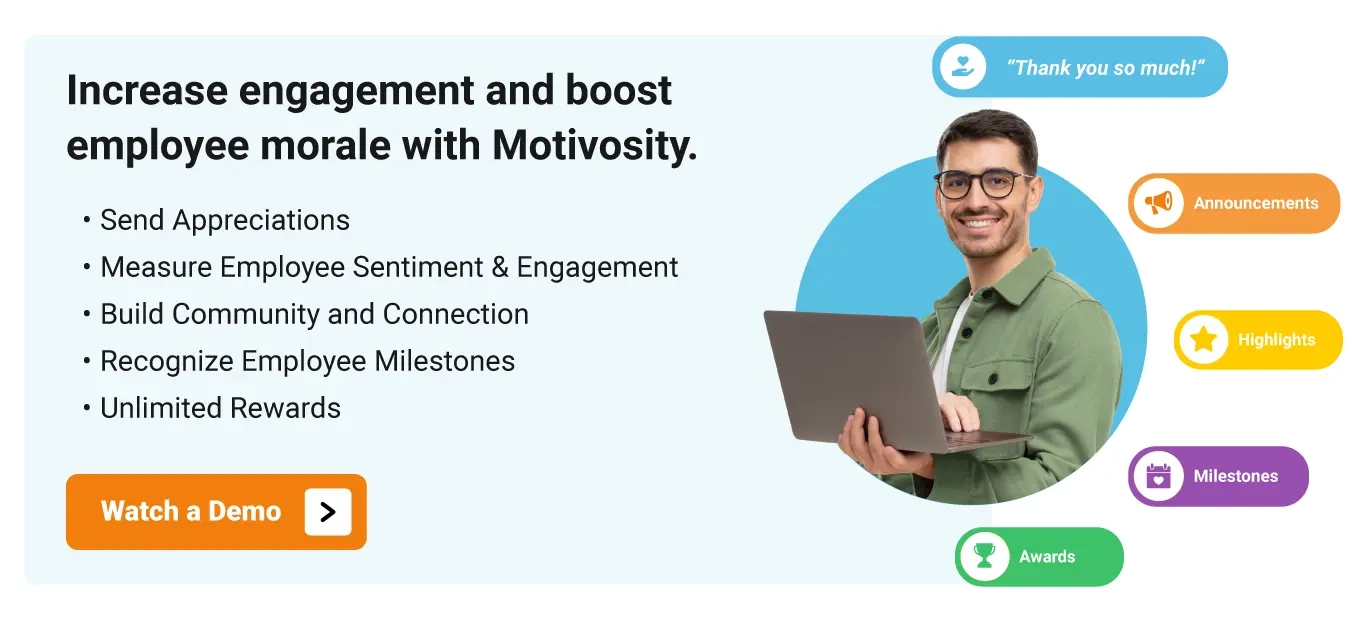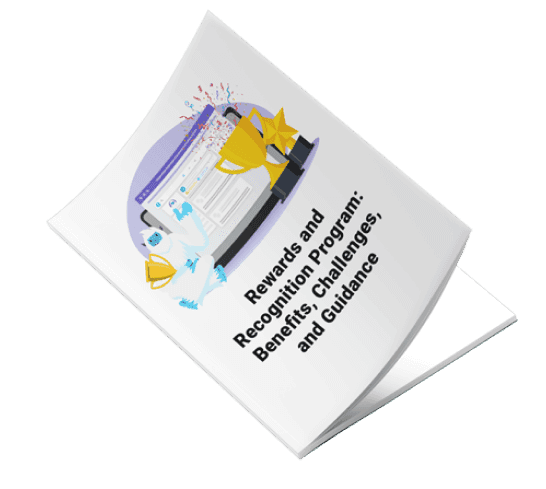
12 Effective Employee Engagement Strategies for a Thriving Workplace
June 18, 2025
|
Erika Rahman
Understanding Employee Engagement Strategies: How They Work and Why They Matter

Key Components of an Effective Employee Engagement Strategy
Top 8 Employee Engagement Strategies to Increase Retention and Drive Satisfaction
Structured Onboarding Experience
Promote and Uphold Core Values
Personalized Career Development and Growth Paths

Encourage Transparent Communication
Recognize and Reward Contributions
Support Workplace Autonomy
Utilize Pulse Surveys for Continuous Feedback
Incorporate Flexible Work Options and Work-Life Balance Support
A Step-by-Step Guide to Building an Effective Employee Engagement Strategy

Step 1: Set Clear Engagement Goals
Step 2: Assess Current Engagement Levels
Step 3: Align Strategy with Company Values and Purpose
Step 4: Foster Clear Communication and Feedback Channels
Step 5: Implement Recognition and Growth Programs
Step 6: Support Work-Life Balance and Well-Being
Step 7: Measure and Continuously Improve

Invest in Employee Engagement for a Strong, Committed Workforce

About the Author

Erika Rahman is a Product Marketing and Content Specialist at Motivosity. She studied marketing and business management at Utah Valley University. Erika has a broad background—from optometry to trade school administration—giving her a love and understanding for people across industries. She grew up in Northern California and Colorado, and currently calls the Utah slopes home.
Learn More
Learn More






